Dishonoring Pat Tillman
Veterans were honored all across America Thursday, while the most famous veteran of our ongoing wars continues to be dishonored.Veterans were honored across America Thursday, while the most famous veteran of our ongoing wars continues to be dishonored.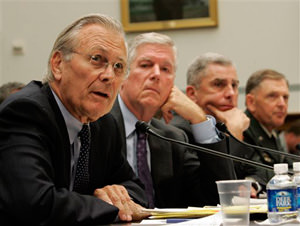
By Narda Zacchino
Veterans were honored all across America Thursday, while the most famous veteran of our ongoing wars continues to be dishonored.
The case of Pat Tillman, whose death by friendly fire led to seven investigations, two books, two congressional hearings and a recently released documentary film, continues to vex, six years after he was killed at dusk on the unwelcoming rocky terrain of Spera, Afghanistan.
Tillman’s family and friends are no closer to learning the full truth about what happened in Pat’s death and its aftermath; they know only that he was killed by “friendly fire” (terribly unsuitable words for a horribly unfriendly act) and that there was a coverup of the circumstances of his death that reached the highest levels of the military and the Bush administration.
This remains an ugly mess of a tale in which deceit is king, and the so-called military code of honor has become a farce. This is blatantly obvious to anyone who has read the 4,000 or so pages of investigative documents, replete with contradictions, incriminating testimony, leads that were dropped, holes so big you could drive a fleet of Humvees through them, and enough villainous characters to populate a Russian novel.
What is known to those of us who have followed the case closely and are familiar with the body of evidence is that witnesses lied, facts were withheld, perjury was suborned, evidence was destroyed, documents were deliberately tainted, justice was obstructed, calls for criminal investigations were ignored, and soldiers with relevant knowledge were threatened with prison if they talked about it.
What we know to be true is that crimes were committed in the investigation of Pat Tillman’s death, and the perpetrators should be held accountable. Questions need to be answered:
Who gave the order for the coverup?
Who gave the order to strip Tillman’s body in violation of military policy that in a case of suspected fratricide the body must be returned in uniform, which is considered evidence?
Who ordered that his uniform — containing evidence of fratricide — be burned along with his equipment?
Who gave the order for the field hospital doctor to write in his report that Tillman, shot in the head and killed instantly, “was administered CPR and transferred to ICU for further CPR,” with another notation that seems to indicate he died days later after surgery?
Who gave the order to not recall that doctor as a witness in the Army’s criminal investigation after he asked for an attorney to be present and was excused to obtain one?
Who gave the order to write the initial incident report saying that Tillman was shot by the enemy in a hostile battle when it was immediately known that he was killed by his fellow soldiers?
Who gave the order to tell soldiers not to disclose to anyone that Tillman was killed by fratricide?
Who gave the order to tell witnesses they could go to prison if they talked about the Tillman matter to the family or others?
Who gave the order to tell the nation’s chief medical examiner and the coroner who would do the autopsy that Tillman was killed in a hostile gun battle with the enemy, when they knew from seeing the body that could not be true?
Who gave the order to deny the chief medical examiner’s call for a criminal investigation?
Who gave the order to deny an earlier call for a criminal investigation by the first investigating officer in Afghanistan?
Who gave the order for the Silver Star commendation to be written as if Tillman were killed in a battle against enemy forces and then to alter it only slightly to leave that implication, when fratricide was known to be the cause of death?
Who ordered the fabrications in the Silver Star commendation’s two eyewitness statements (referred to by the Pentagon’s inspector general as “materially inaccurate”)?
Who ordered the “disappearance” of the report and recommendations of the first investigating officer, who testified that he thought “some Rangers … could be charged for criminal intent” and who recommended that higher-ranking officers be investigated for gross negligence in events leading to Tillman’s death?
Who ordered that he change that testimony regarding the culpability of those higher-ranking officers?
Who ordered him to delete the only known copy of his report and recommendations from his computer thumb drive following his testimony, in which these documents that later went missing for the second time were marked as exhibits?
Who ordered the eyewitnesses who testified under oath to him to change their statements in subsequent testimony as to key factors — time of day, light conditions, distance — at the time Tillman was killed?
Who ordered him to not tell the nation’s chief medical examiner that Tillman was killed by fratricide?
Who ordered a fraudulent witness statement, ostensibly given by that first investigating officer, to be entered into the case file 10 days before he actually was called as a witness, and why was that done?
Who ordered that the family and the American public be kept in the dark about the fratricide so that Tillman’s nationally televised memorial could proceed with speeches attesting to his heroic gun battle with enemy forces, and who wrote and dictated that morning the false details of that battle to be read at the memorial by Tillman’s friend, Navy SEAL Steve White?While the public has been led to believe that every angle was exhaustively covered in the myriad investigations, it is obvious that is not the case. Questions still abound.
Rep. Henry Waxman held two congressional hearings in 2007 that led to more disappointment and frustration for the Tillman family. The hearings were held to determine whether the Bush administration and Defense Department deliberately deceived the American people and the Tillman family to exploit Pat’s death to stoke patriotic sentiment about the country and the military’s operations. Indeed, Tillman’s death did elicit that public response.
Dan Bartlett, assistant to the president for communications, noted in an e-mail the day after Tillman’s death that the former professional football star had “made the American people feel good about our country … and our military.” Two days later, an e-mail memo from an Army public affairs officer noted that the story resulted in the greatest amount of media interest in the Army “since the end of active combat last year,” and that the coverage had been “extremely positive.”
This was important to offset the extremely negative media coverage in the spring of 2004. The day Tillman died, The Associated Press reported that April had become the deadliest month for U.S. casualties since the war in Iraq began — and the month wasn’t over. The first bloody battle for Fallujah raged that April, and the Abu Ghraib prison scandal was about to break.
Waxman’s committee also tried to determine when and how top officials in the administration and Defense Department first learned of the Tillman fratricide. In a tremendous insult to the Tillman family and the American people, the committee was stonewalled; it noted in its executive summary that “on the key issue of what senior officials knew, the investigation was frustrated by near universal lack of recall.” Bartlett, presidential press secretary Scott McClellan and chief speechwriter Michael Gerson could not recall when they learned about the fratricide or did in response.
While virtually every member of the military knew when he or she first heard that Pat Tillman was killed by fratricide, their leader, former Secretary of Defense Donald Rumsfeld, testified under oath, “I don’t recall when I was told and I don’t recall who told me.” (His testimony, and that of Mary and Kevin Tillman, Pat’s mother and brother, can be seen in the acclaimed documentary “The Pat Tillman Story,” released nationwide recently.)
Another witness, Chairman of the Joint Chiefs of Staff Gen. Richard Myers, who communicated many times a day with Rumsfeld and met with White House officials frequently — testified he learned of the fratricide by the end of April 2004 but could not recall whether he told President George W. Bush or Rumsfeld about it, although he did tell his public affairs adviser they needed to “calibrate ourselves” and “be careful how we portray the situation.” Myers, who thought to call the National Football League commissioner to personally inform him of Tillman’s death, could not recall whether he shared the news of the fratricide with the two men to whom he was the principal military adviser.
A third committee witness, Gen. John Abizaid, who had been sent a high priority e-mail April 29 from Gen. Stanley McChrystal noting the fratricide, testified he did not get it until a week later and did not talk to Rumsfeld about the fratricide until about two weeks after that.
The testimony of these three witnesses is simply not credible. As in the investigations that preceded this one, the family, the American people and most of all the soldier — Pat Tillman — were disrespected.
The government and military apparently have no further interest in Pat Tillman. Fortunately, he remains alive in the public’s imagination and consciousness. I have received thousands of Google alerts about Pat Tillman since 2006, when I collaborated with Mary Tillman on her book, recently released in paperback, “Boots on the Ground by Dusk: Searching for Answers in the Death of Pat Tillman,” to coincide with the acclaimed film documentary “The Pat Tillman Story.” I read each alert, awaiting even a sliver of truth to emerge, possibly from a long-buried document, or lifted from the heavy conscience of one of those with firsthand knowledge of facts not yet revealed. The truth is worth waiting for. Pat Tillman deserves that.
Your support matters…Independent journalism is under threat and overshadowed by heavily funded mainstream media.
You can help level the playing field. Become a member.
Your tax-deductible contribution keeps us digging beneath the headlines to give you thought-provoking, investigative reporting and analysis that unearths what's really happening- without compromise.
Give today to support our courageous, independent journalists.
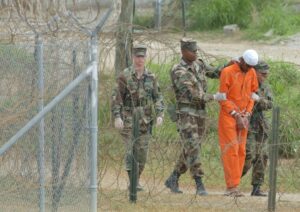
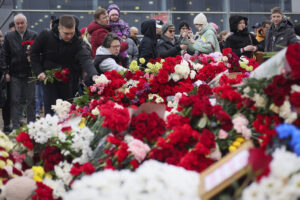
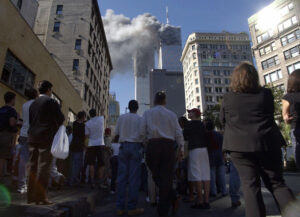
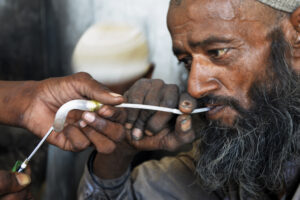
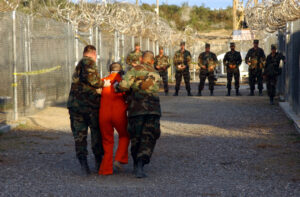

You need to be a supporter to comment.
There are currently no responses to this article.
Be the first to respond.